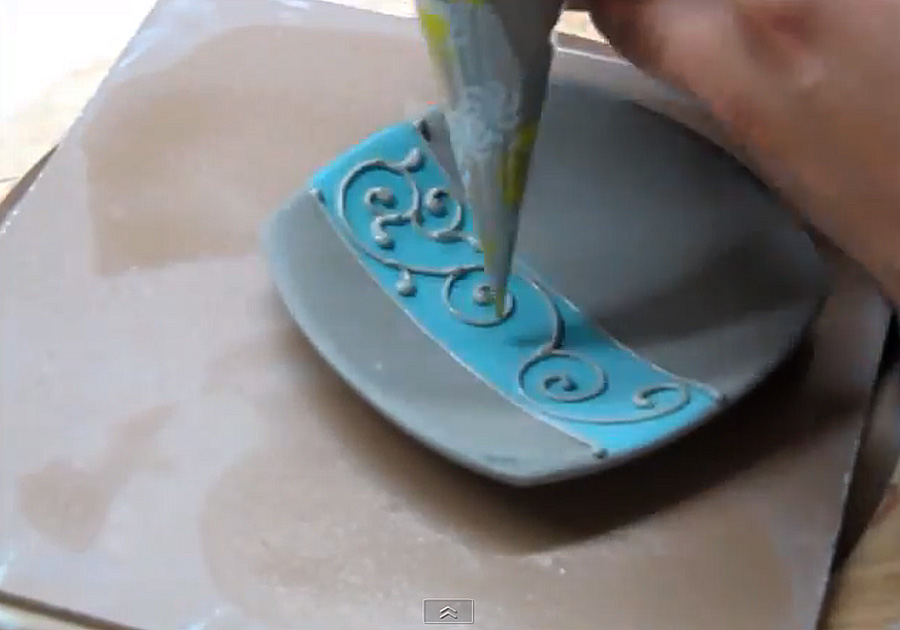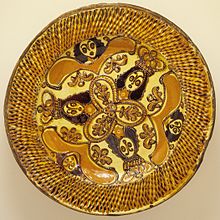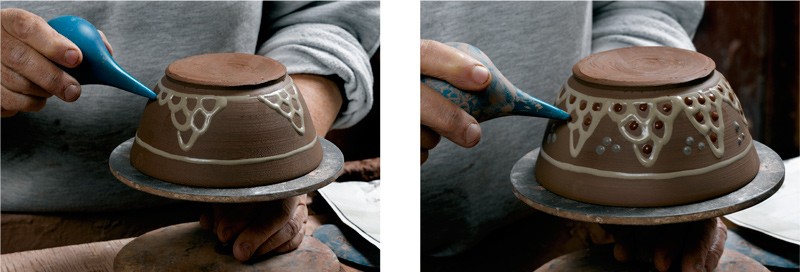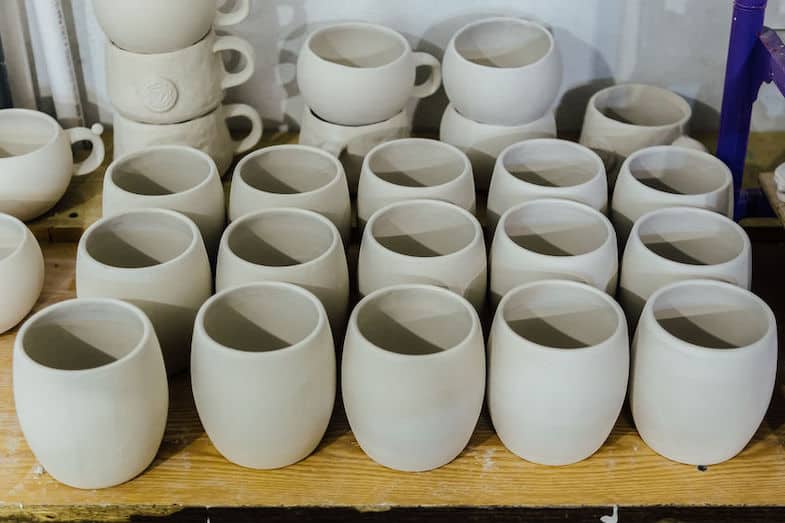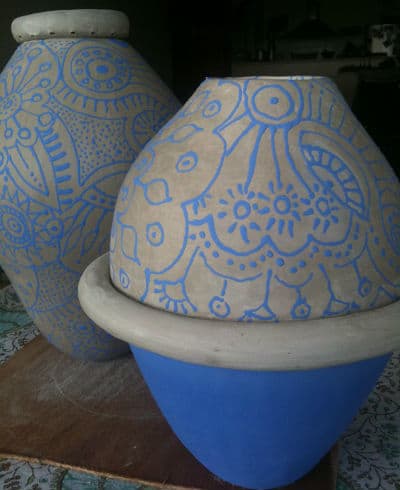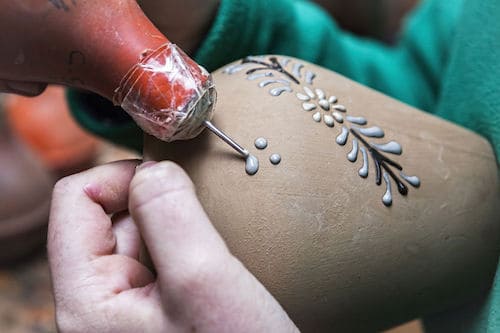Slip Trailing Ceramics Definition

A thicker slip can be trailed onto the object using a condiment bottle or other trailing applicator.
Slip trailing ceramics definition. Firstly to form the basic shape by slipcasting with moulds. A technique used by potters to decorate ware. A more liquid slip can be brushed on sprayed on or pieces can be dipped in a container of slip. Multiple layers of slip can be built up to make intricate designs.
Like its cousin glaze trailing slip trailing applies material in lines using a slip trailer or other applicator. Neutral and colored slips clay in thick paste form are trailed onto the ware in raised lines and strokes to create tactile designs. Glaze trailing is a super fun glazing technique that is somewhat similar to its cousin slip trailing in that both use a slip trailer ear syringe or other such device to draw designs on pottery. This technique can add texture to the surface of a pot.
It has many uses in the production of pottery and other ceramic wares. Slip is also used to decorate pottery by painting the pottery with the slip and letting it dry creating a two tone look. A slip is a liquid mixture or slurry of clay and or other materials suspended in water. In pottery the two most important uses of slip are.
It can also add contrast to the surface of the clay when different colored slips are used. This has been extremely important for several centuries and secondly to protect or decorate the pottery which is. Pottery stores sell special needle tools and scratch wire brushes for scoring. Practice working with the slip trailing bottle on a leather hard flat piece of clay to get an idea of how it flows.
But glaze trailing is done with two contrasting glazes. Slip trailing is a great way to use clay slip as a decorative tool. Score scoring clay involves slicing small notches into the clay with a sharp tool. It times time to get the feel of squeezing the bottle with the right amount of.
The big difference is that this ceramic decorating technique not only adds lines and patterns but it also creates a raised surface texture that adds tactility to the decoration. There are many ways to use slip to decorate ceramic pieces. Because it is glaze on glaze the lines do not remain raised on the surface as they do with.










